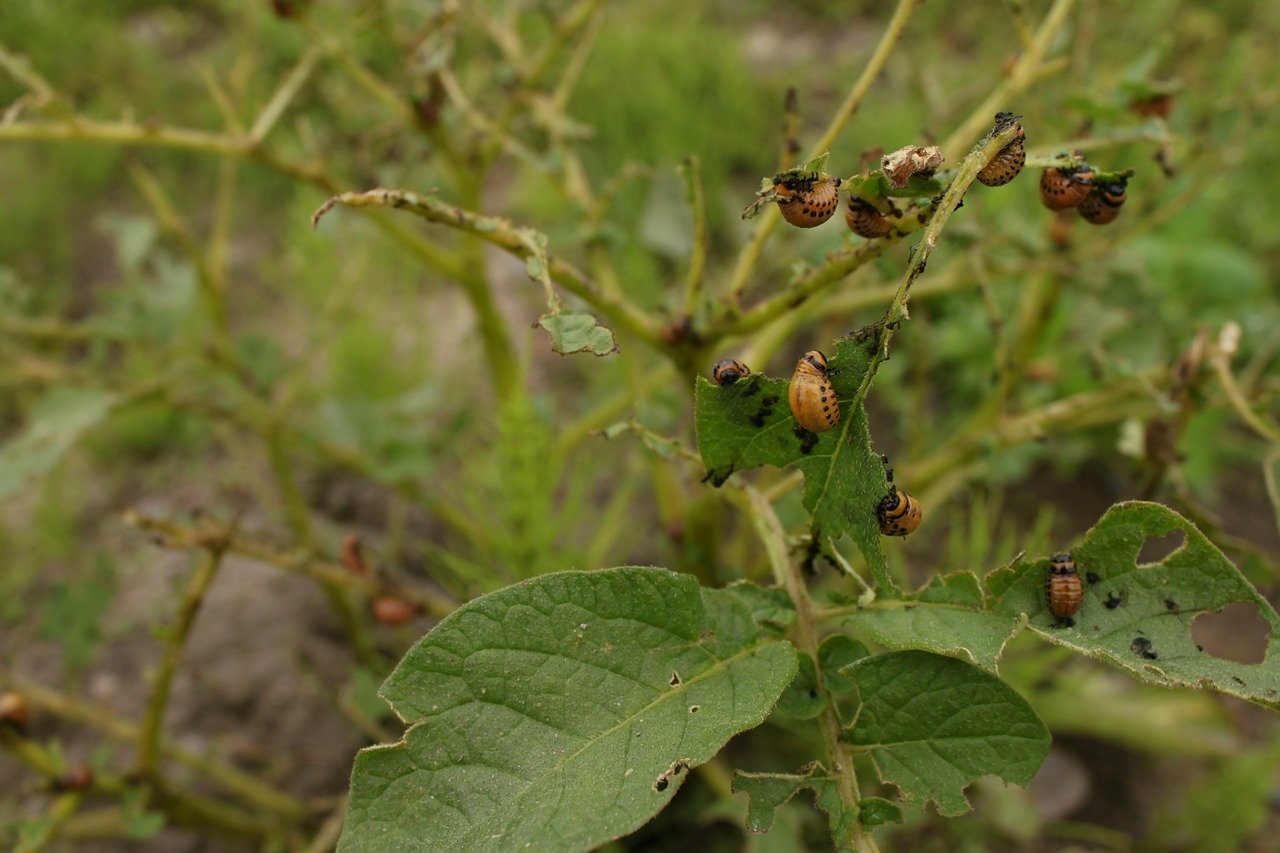Ten-lined potato beetle
How to get rid of the pests
The yellow-black striped beetle and its reddish-brown larvae, which later turn yellowish, eat potato leaves down to the stem. This can result in the leaves being completely eaten away, leading to significant crop losses.
Treatment and prevention

Preventive: Start checking your plants for beetles and larvae as early as May (when the pests start to fly) and collect them by hand. You should also remove any leaves with yellow eggs on the underside. A mixture with horseradish (risk of proliferation!), flax or peppermint (risk of proliferation!) can also deter the pests. Stinging nettle manure also has a strengthening effect on plants. Close-meshed plant protection netting can also protect against
Akut infestation: Collect larvae, eggs and beetles. Sprinkle the plants with rock flour or spray them with neem oil. A homemade horseradish slurry can also repel the beetles. Add 200g/7 fl. oz. of dried horseradish to 10 L/21 pt of cold water and leave in the sun for a few days. Coffee grounds also repel the pests: sprinkle dried coffee grounds on the leaves of the affected plants every few weeks, preferably early in the morning: Lacewings, birds
Affected plants
Potatoes and other Solanaceae (nightshade) plants such as tomatoes, aubergines and peppers.
Other information
The flight phase of early beetles begins as early as April. They prefer warm, dry summers. Gardeners should pay particular attention from June as this is when they begin to lay their eggs. The beetles spend the winter pupating in the soil, so the soil should be thoroughly dug up after harvesting.
https://pixabay.com/photos/colorado-potato-beetle-pest-beetle-582966/

